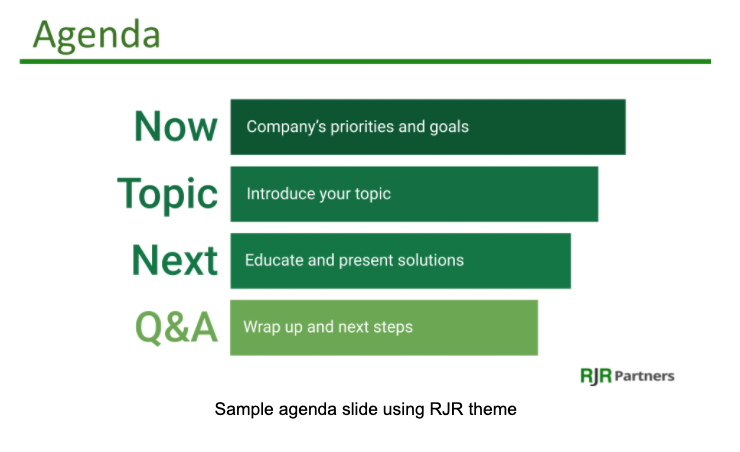Mock presentation interviews are one of the final steps you take before securing a position at a company. It can also be the make-it-or-break-it moment in your interviewing process. Many candidates lose the job at the finish line because they lack proper preparation. These are a few things you will be assessed on, along with tips to impress your interviewer.
Preparation
Preparation sets the foundation for a successful mock presentation. A great place to start is to send a professional pre-meeting email the day before that contains a confirmation of the time of your presentation, the agenda, and goals of the interview/call. Make sure you have done your research. Familiarity with the Company and the content of your presentation ensures that you pick a relevant company and buyer personas.
Your slide deck is what your interviewers are going to be looking at. These are some guidelines to follow to make its appearance professional and clean:
5-10 slides maximum (depending on format of presentation)
Use the company’s theme: same color palette, logo, and imagery
Include a clear agenda
Minimal wording (allows for a two-way discussion without reading slides as a script)
The most important thing you should do before it is time for your mock presentation is to practice. Know your presentation inside and out. When you feel as if you’ve rehearsed enough, continue rehearsing; this allows you to flow through your presentation as seamlessly and conversationally as possible.
Setting the Stage
Before getting into character for your mock presentation, give the hiring team an overview of how the meeting would have occurred in a normal setting (e.g. “This meeting was requested by you, playing the role of a client responding to a cold-inquiry on our website”). Assign roles to the people in the meeting (e.g. “You are now playing the roles of CMO and VP, Marketing who are learning about our product for the first time”). After you have set the stage, proceed to your mock presentation in character.
Discovery
Begin your meeting with questions for the client. Have the ability to uncover prospect needs using 1st and 2nd line discovery questions. This can include questions such as:
What problem are you trying to solve?
Tell me about your goals.
When do you need to achieve these goals?
What is your budget to solve this problem?
How will this solution improve things?
Who is involved in the decision?
What other options are being explored?
When are you planning to make this decision?
How can I help make this easy?
Personality & Professional Image
A big part of the presentation is how you present yourself as a person. Build rapport, engage your audience, and exude confidence and executive presence. Dress to impress and look put-together; business formal or business casual is typically expected. Wearing a hat or lounge clothes can be deal breakers. On video calls, your interviewers can see behind you so situate yourself in a professional setting or have your background blurred.
Presentation
During the presentation, be able to demonstrate your knowledge of the product, company, space, and competitive landscape. Come prepared with a high level understanding of key benefits and differentiations. The point is to be able to educate the customer. Try to avoid lingering on one topic by presenting in a focused and succinct manner. Incorporate the answers you were given from your discovery questions back into your presentation content and delivery and effectively handle objections. If you’re asked any questions you do not know the answer to, appropriately refrain from giving false information, don’t answer the questions without the relevant information; defer the question to your “Sales Engineer” or offer to send an answer in a follow up email.
Meeting Close
Finish the presentation with a strong closing and discuss the next steps. Arrange a date, time, and attendees for the next meeting. Do not finish your presentation and end the call without a plan for another meeting.
Post-Presentation Feedback
After your presentation is finished, be prepared for feedback. Accept the feedback with a humble, coachable attitude. If you’re not given feedback right away, request it. If you’re instead asked to give feedback on yourself, confidently give yourself a humble and honest review without over-praising or over-criticizing yourself. Use a thank you email as an opportunity to reflect on the feedback you received.
Typically, you are not expected to possess a deep, technical understanding of the product or solution. The objective is more about demonstrating how you conduct customer meetings, how you present, and what your level of investment is in the interview process.

